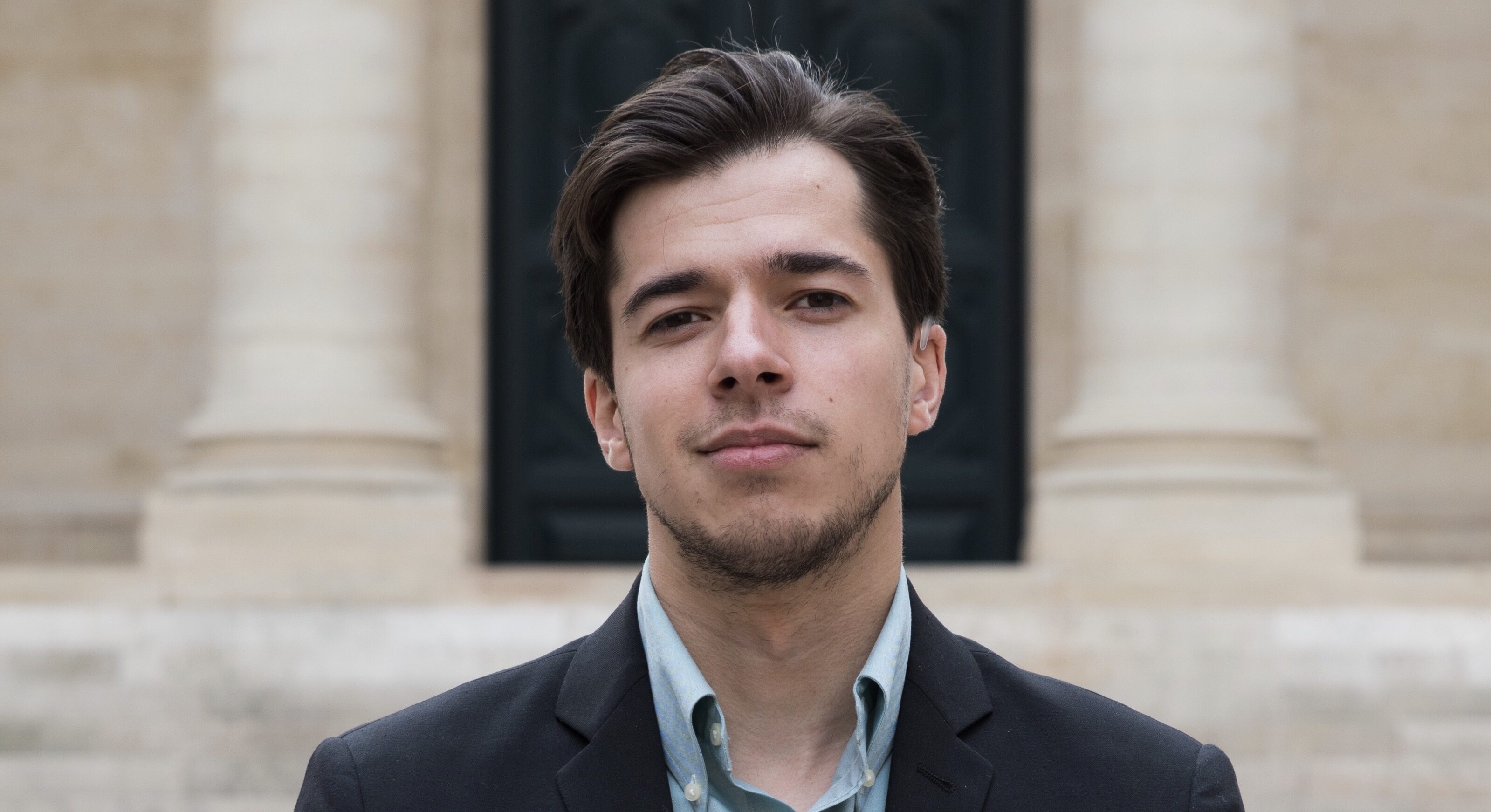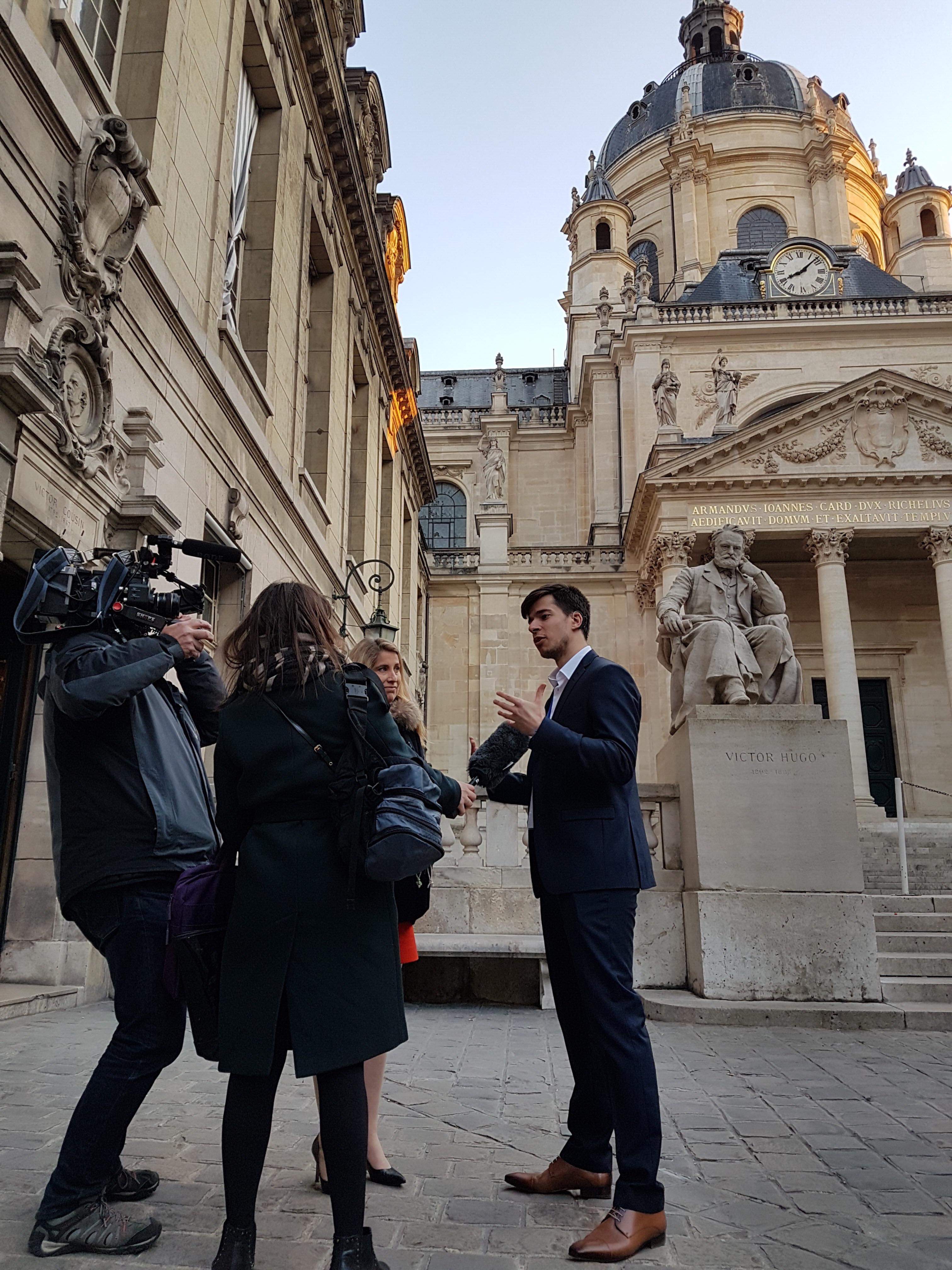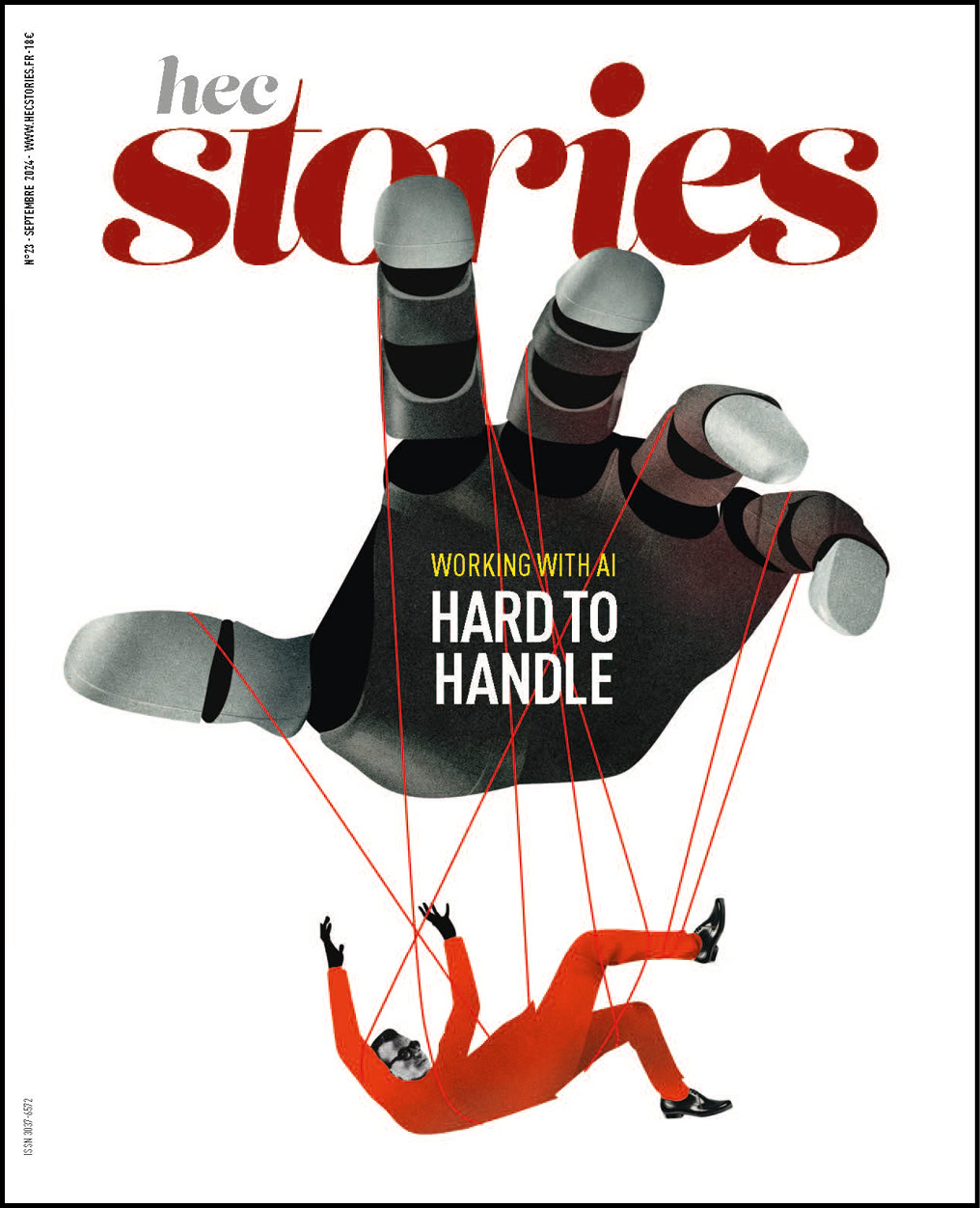Florian Meloux (X-HEC.20): Using Machine Learning to Enable the Deaf to Read

From community college to HEC, his journey is quite unusual. Born profoundly deaf, Florian Meloux (X-HEC.20) participated in the creation of Keia, a startup that uses artificial intelligence to translate written content into sign language.
In France, 7 million people have hearing impairments, with 450,000 of them using sign language, and 350,000 unable to speak at all. Many struggle to read French correctly. “Sign language is very different from French in terms of grammar or syntax,” explains 30-year-old Florian Meloux. “It is also a highly visual language. Words are like images.”
By integrating a 3D avatar that signs the text of a website, his startup Keia makes online content accessible for the hearing-impaired. This is particularly useful when reviewing the terms of a lease or trying to follow government guidelines during a pandemic.
Deaf individuals face the difficulty of understanding French early on in their education. A 2014 study by French public institution for statistics Drees even shows that only 5% of the deaf pursue higher education. There is no more recent data on the subject. Florian Meloux encountered a lack of means and accommodations multiple times in his journey. He has fought to avoid belonging t the nearly 40% of deaf individuals facing unemployment and had to forge his own path.
A Foot in Both Worlds
Originally from Orléans, central France, the young entrepreneur was born with a profoundly hearing loss of type III (loss exceeding 110 dB). At the age of 2, he had the chance to receive a cochlear implant, an advanced technology that transmits electrical impulses to the auditory nerves. “I belong to the second generation implanted with this device.” He doesn’t describe the implant as a miracle but rather as a tool to be mastered. “You have to learn to speak and understand French. It’s a significant mental burden. I was fortunate enough to see a speech therapist from age 3 to 18, up to two hours per week.” Today, Florian speaks with the clarity of a hearing person.
During his school years, he experienced what he calls “the two worlds.” In the world of the hearing people, accompanied by school assistants, he remained a good student until high school. He however struggled with his time at Lycée Rodin, a boarding school adapted for the deaf and hard of hearing in the 13th arrondissement of Paris. “Boarding school, adolescence… At that time, I completely messed up my year.”
French Sign Language is our mother tongue. French is like a second language.
He is directed towards a professional baccalaureate at the National Institute for Deaf Youth in the 5th arrondissement, a sumptuous establishment created after the French Revolution, the first of its kind. Nevertheless, the high school student feels like “living in slow motion. There was a considerable gap with the level of mainstream schools.” He tries to go back to a general curriculum but his file is rejected due to a lack of interpreters. Resigned, Florian gets bored, barely studies for his baccalaureate in graphic production, which he nevertheless easily obtains.
However, he refuses to give up his dreams of further education and tackles an advanced technician’s certificate in business unit management back in Orléans. This return to the world of the hearing was “very tough for me. It involved a lot of work and bad grades. I held on thanks to my class teacher.” He followed up with a Bachelor’s degree in digital technology at the University of Évry: a rebirth. There, professors use projectors, allowing Florian to attend classes with fewer difficulties.
That’s also when the ambition to develop a business came to him. “I aimed for HEC because it provides a mindset, discipline, and a network.” His strategy to access the school was to first enter the Innovation Management of Technologies program at La Sorbonne University. “Today, I still wonder how I managed to get here when I was in community college just a few years ago.”

In 2019, a decree requires public organizations and companies with revenues exceeding 250 million euros to make their online services accessible to people with disabilities. In 2021, he joined Keia after graduating from HEC Paris and contributed to the development of the startup as a salesperson, alongside David Ohana, a CODA (Child of Deaf Adults), and his cousin Emmanuel. Florian has known these entrepreneurs for ten years through an association named Mains Diamant, which had created the first French Sign Language dictionary on the web. The project just made sense to him.
Contacted by the government, their soon-to-be number one client, Keia won a bid in 2021. Its B2B model was then deployed to giants like Airbus, Thales, and the French insurer Macif. “My contact book was built through the HEC network. It helped me get in touch with some of our most prestigious clients.”
The Art of Translation
The concept of Keia seems simple. In theory. In practice, it mobilizes significant technical resources: actors equipped with motion sensors, hours spent translating each word to build a lexicon… Digital avatars are then animated using motion capture, “like in video games.”
Next is synchronizing gestures and words, and feeding the AI with phrases following the machine learning principle used by Deepl or Google Translate. But unlike French-English translation, they have to invent everything. “There is no data on sign language. The translation team has to create it,” explains the entrepreneur. “It’s a colossal task, and we proceed by theme.” Once the result is obtained, Keia has its content reviewed by the French Sign Language Academy. The startup is like an agency and employs around fifteen freelance translators and a handful of 3D animators.
Voir cette publication sur Instagram
Florian Meloux aims for a massive deployment of his solution in the French market, drawing inspiration from the Brazilian company Hand Talk, a global leader in sign language translation. His company currently generates 170,000 euros in revenue. More importantly, he desires “raising awareness among the population. Many of my friends from high school are unfortunately still struggling, unemployed, and still don’t understand what they write. Everyone needs to know that the language barrier exists for the deaf regarding written content.”
Photos ©Florian Meloux/KEIA
Published by Estel Plagué

